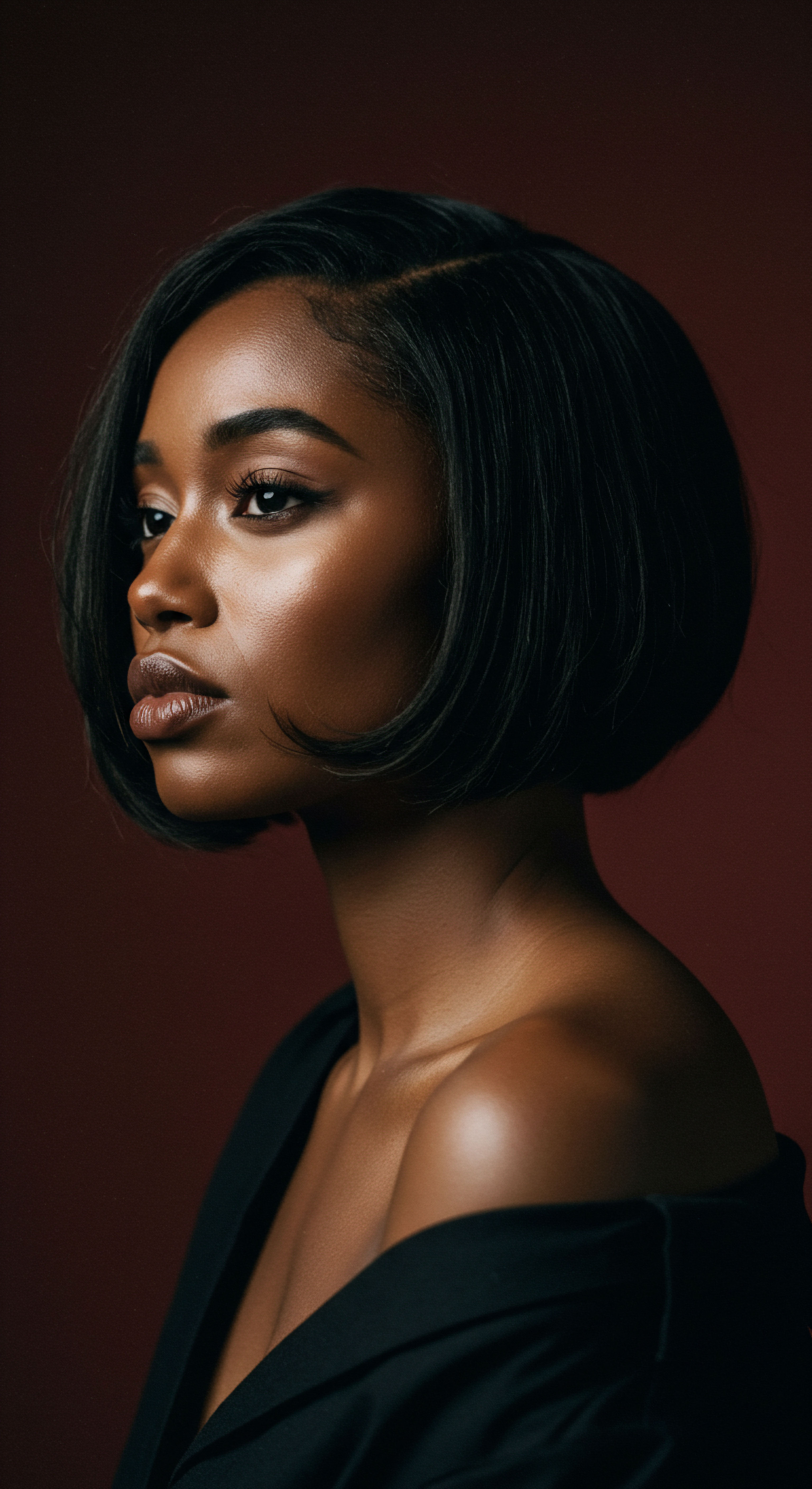
Roots
From the quiet whisper of ancient looms to the vibrant tapestry of contemporary beauty rituals, silk has held a revered place in human adornment. For centuries, its delicate touch has graced royalty and comforted the tenderest skin. Yet, within this shimmering fiber lies a fascinating duality, two distinct proteins that offer disparate gifts to our strands.
To truly comprehend the profound care silk can offer textured hair, we must first look to its very origins, disentangling the components that make this natural wonder so unique. This exploration is not merely an academic exercise; it is an invitation to deepen our reverence for the materials we choose for our crowning glory, particularly for coils, kinks, and waves that crave understanding and gentle strength.

The Silkworm’s Ingenuity
The silkworm, Bombyx mori, is a creature of astonishing biological design. Its life cycle culminates in the spinning of a cocoon, a marvel of natural engineering. This cocoon, from which the precious silk is harvested, is not a singular, homogenous substance. Instead, it is a precisely constructed shelter, a testament to the silkworm’s inherent ability to synthesize complex biopolymers.
The production process involves specialized glands that secrete two primary proteins in a liquid state, which then solidify upon contact with air. This remarkable transformation yields a composite fiber, a protective casing for the developing pupa.
The distinction between these two proteins is often overlooked in casual discussions of silk, yet it holds considerable bearing on their respective contributions to hair wellness. One forms the very scaffold, lending structure and resilience. The other, a gummy, often dismissed coating, acts as a binder, securing the integrity of the cocoon. Appreciating this biological marvel sets the stage for discerning how each component might interact with the unique architecture of textured hair.
Silk, a revered natural fiber, owes its remarkable properties to two distinct proteins ❉ fibroin and sericin.

What Are the Core Structural Components of Silk?
At its very foundation, silk, as produced by the silkworm, consists primarily of two protein types ❉ Silk Fibroin and Silk Sericin. These two proteins coexist within the raw silk filament, each playing a specific biological role in the cocoon’s formation and possessing distinct chemical and physical characteristics that dictate their utility in various applications, including hair care. Their differences extend beyond mere nomenclature; they are fundamentally distinct in their molecular makeup, spatial configuration, and resultant functional attributes.
Fibroin, the core structural protein, constitutes roughly 70-80% of the silk fiber by weight. It is the primary component that lends silk its renowned strength, luster, and soft drape. From a molecular standpoint, fibroin is a fibrous protein composed of long chains of amino acids, predominantly glycine, alanine, and serine. These amino acids are arranged in repeating sequences that facilitate the formation of highly ordered crystalline regions interspersed with amorphous, less structured segments.
This semi-crystalline structure is what confers fibroin its exceptional tensile strength and elasticity, properties highly sought after in textile applications and, by extension, in formulations aimed at fortifying hair strands. The specific arrangement of its polypeptide chains into beta-sheet structures allows for strong hydrogen bonding between adjacent chains, creating a remarkably stable and robust material.
Conversely, Sericin, often referred to as silk gum, makes up the remaining 20-30% of the raw silk. It acts as a natural glue, coating the fibroin filaments and binding them together to form the cocoon. Unlike fibroin, sericin is a globular protein, meaning its amino acid chains are folded into a more spherical, less ordered conformation. Its amino acid profile differs significantly from fibroin, containing a higher proportion of polar, hydrophilic amino acids such as serine, threonine, and aspartic acid.
This makes sericin considerably more soluble in water than fibroin. In its natural state, sericin presents as a yellowish, sticky substance. While historically viewed as a waste product during silk processing (degumming), contemporary research has begun to illuminate its own compelling attributes, particularly for its humectant and film-forming capabilities.
| Property Primary Function in Cocoon |
| Silk Fibroin Structural core, strength |
| Silk Sericin Adhesive, binder, protective layer |
| Property Percentage in Raw Silk |
| Silk Fibroin 70-80% |
| Silk Sericin 20-30% |
| Property Protein Type |
| Silk Fibroin Fibrous |
| Silk Sericin Globular |
| Property Solubility in Water |
| Silk Fibroin Low |
| Silk Sericin High |
| Property Molecular Structure |
| Silk Fibroin Beta-sheet, crystalline |
| Silk Sericin Amorphous, random coil |
| Property Amino Acid Dominance |
| Silk Fibroin Glycine, Alanine, Serine |
| Silk Sericin Serine, Threonine, Aspartic Acid |
| Property Feel/Texture |
| Silk Fibroin Smooth, strong, lustrous |
| Silk Sericin Gummy, sticky (in raw form) |

Why does the Molecular Structure of Silk Proteins Matter for Hair?
The differing molecular architectures of fibroin and sericin dictate how each protein interacts with the hair shaft. Hair itself is a complex protein structure, primarily keratin. Its outermost layer, the cuticle, consists of overlapping scales.
The condition of these scales significantly impacts hair’s appearance, feel, and susceptibility to damage. When we consider external agents like silk proteins, their ability to penetrate, coat, or adhere to the hair surface is profoundly influenced by their size, shape, and hydrophilic/hydrophobic balance.
Fibroin, with its tightly packed, ordered structure, typically comes in hydrolyzed forms for hair products, meaning the large protein molecules have been broken down into smaller peptides or amino acids. This hydrolysis is essential for the protein to be small enough to potentially pass through the cuticle or at least lay smoothly upon it. Its inherent strength, even in fragmented form, suggests a potential to reinforce the hair’s internal structure, perhaps filling in microscopic gaps or offering a scaffolding effect that strengthens the strand from within. Its low solubility also means that once applied and dried, it may form a more durable, less easily rinsed film.
Sericin, being more hydrophilic and globular, possesses a greater affinity for water. This characteristic makes it an exceptional humectant, capable of drawing moisture from the environment and binding it to the hair. Furthermore, its film-forming capacity, even in its raw, gummy state, translates into a smoothing and conditioning effect when applied to hair. It tends to create a protective layer on the hair’s surface, helping to smooth down raised cuticle scales.
This surface action contributes to improved slip, reduced friction, and enhanced shine. The presence of numerous hydroxyl groups in sericin’s amino acid profile allows for extensive hydrogen bonding with water molecules and the hair’s keratin, contributing to its moisturizing and conditioning attributes.
The divergent properties of these two silk proteins mean that while both hail from the same natural source, their applications in hair care are often distinct, targeting different aspects of hair health and aesthetics. Understanding this foundational split allows for a more informed selection of products, tailored to the specific needs of textured strands.
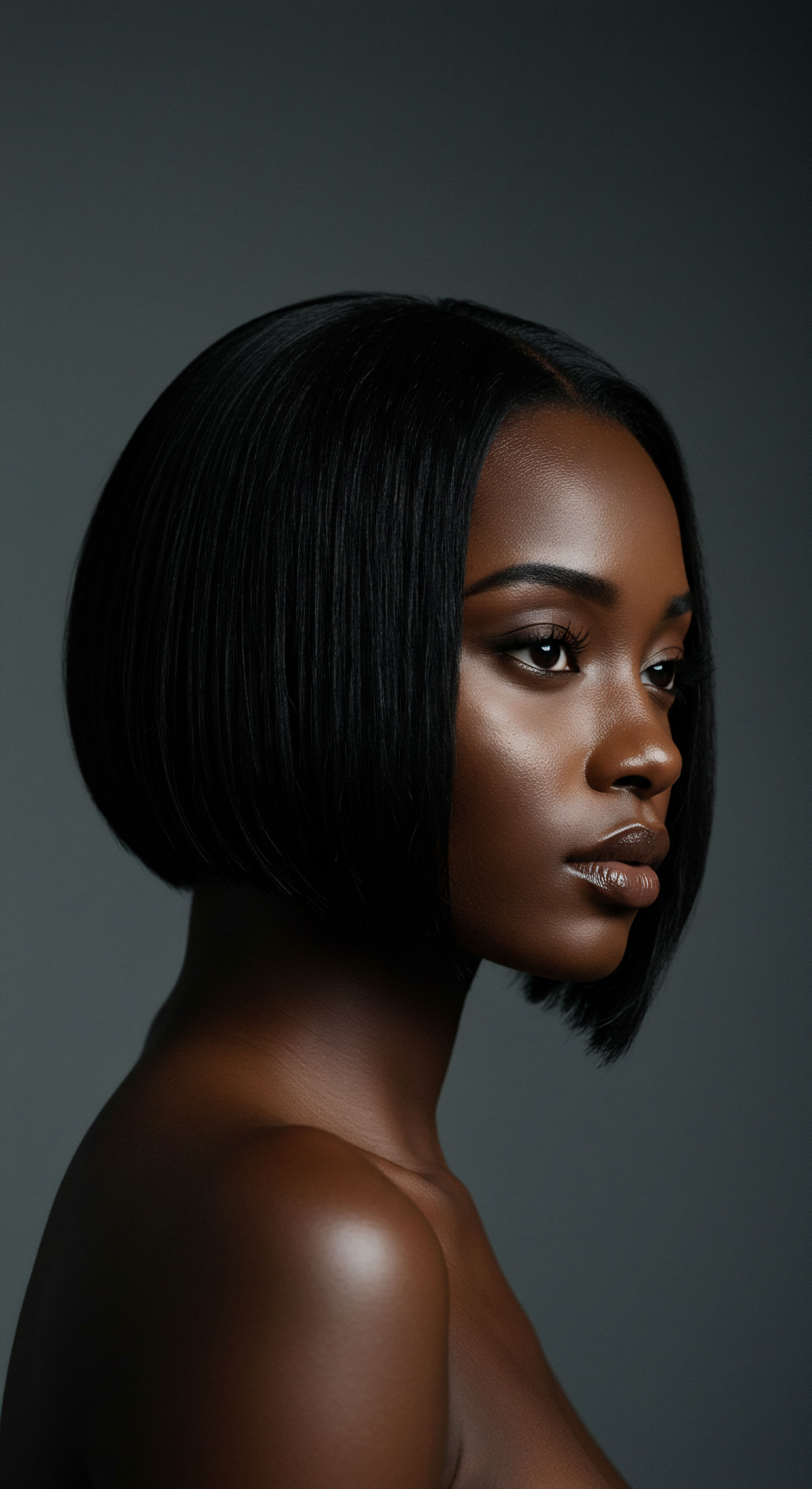
Ritual
Our hair care rituals are more than mere routines; they are conversations we have with our strands, acts of attentiveness that shape their vitality and appearance. When we select ingredients, we are making choices that reverberate through the very structure of our hair. The journey from understanding the distinct identities of silk fibroin and sericin to thoughtfully incorporating them into our care practices marks a pivotal shift.
It moves us beyond generic “silk protein” claims towards a nuanced application of these remarkable natural gifts, allowing us to cultivate the strength and softness that textured hair truly deserves. This section delves into how these unique proteins can become integral components of a mindful and effective hair regimen.
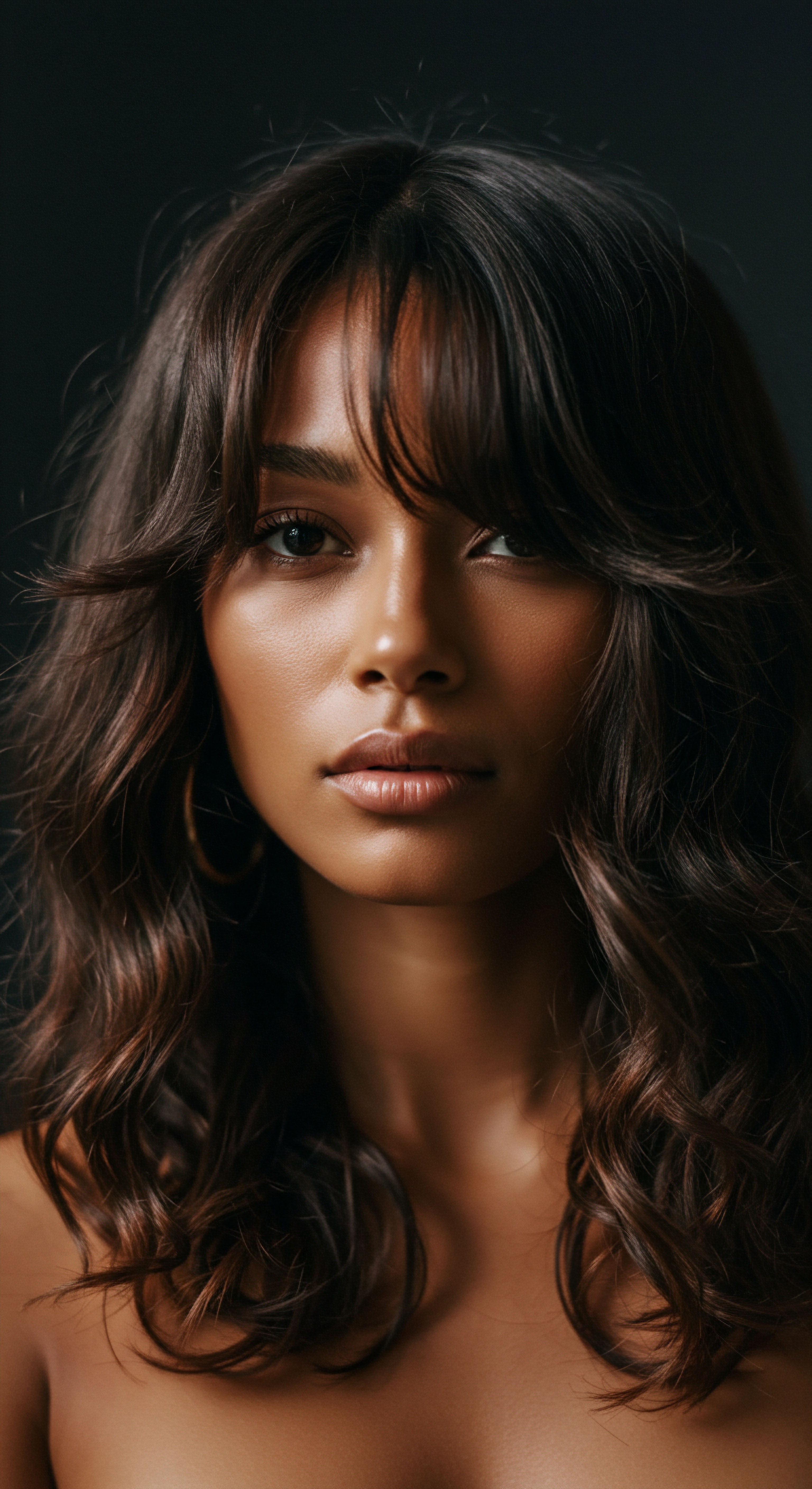
How do Silk Fibroin and Sericin Interact with Hair at a Molecular Level?
The efficacy of silk proteins in hair care stems from their capacity to interact with the hair shaft at a microscopic level. Hair, composed primarily of keratin, possesses a negative charge, particularly when wet or damaged. Proteins, depending on their amino acid composition and pH, can carry positive or negative charges. This electrostatic interaction is a primary driver of how ingredients adhere to or repel from the hair surface.
Silk Fibroin, typically hydrolyzed into smaller peptides for cosmetic use, carries a net negative charge at physiological pH, similar to hair. However, its benefit comes less from electrostatic attraction and more from its ability to form a strong, resilient film. These smaller fibroin peptides, with their propensity to re-form beta-sheet structures, can lay down on the hair’s cuticle, potentially patching areas of damage and contributing to a smoother, more robust surface. Some research suggests that smaller hydrolysates might even be able to penetrate the cuticle, reaching the cortex to provide internal reinforcement.
A study published in the Journal of Cosmetic Science demonstrated that silk fibroin peptides, when applied to hair, significantly reduced breakage and improved tensile strength, particularly in chemically treated hair, indicating a restorative or fortifying action beyond simple surface conditioning. This suggests a deeper, more structural benefit, particularly valuable for textured hair which can be prone to mechanical stress.
Silk Sericin, on the other hand, possesses a higher proportion of hydrophilic amino acids with numerous hydroxyl groups, enabling it to form extensive hydrogen bonds with water molecules and the keratin of the hair. While it also carries a net negative charge, its globular structure and higher solubility allow it to form a more flexible, hygroscopic film on the hair’s surface. This film helps to smooth the cuticle, thereby reducing friction between individual strands and leading to enhanced shine and softness.
The film also acts as a moisture barrier, slowing down water loss from the hair shaft, a particularly beneficial attribute for textured hair which often struggles with moisture retention due to its unique curl patterns and raised cuticles. Sericin’s ability to create a non-occlusive, breathable layer makes it an exceptional humectant and conditioning agent, contributing to hair suppleness and manageability.

Applying Their Distinct Benefits
Understanding these molecular interactions guides us in how to best employ each protein. Fibroin’s strength-imparting qualities mean it finds its place in formulations aimed at fortifying, repairing, and preventing breakage. Consider it a building block, a reinforcement for the hair’s inherent architecture.
Sericin, with its superior conditioning and moisture-binding capabilities, acts as a protective veil, smoothing, softening, and hydrating. It’s the gentle embrace that brings pliability and a luminous sheen.
- Fibroin for Strength ❉ Look for Hydrolyzed Silk Protein or Hydrolyzed Fibroin in deep conditioners, protein treatments, or leave-in fortifiers. These products are designed to address elasticity, reduce shedding, and minimize breakage, especially for hair that feels weak, limp, or has undergone chemical processing.
- Sericin for Softness ❉ Seek out Sericin or Hydrolyzed Sericin in rinse-out conditioners, styling creams, or detanglers. Its presence indicates a product aimed at enhancing slip, improving combability, and imparting a soft, smooth feel with increased hydration.
The ritual then becomes one of intentional layering. A regimen might begin with a protein-rich treatment featuring fibroin to bolster the hair’s resilience, followed by a conditioner or leave-in rich in sericin to seal in moisture and provide surface smoothness. This synergistic approach allows us to address both the internal integrity and external beauty of textured strands.
Fibroin reinforces hair structure, while sericin conditions and hydrates the surface.
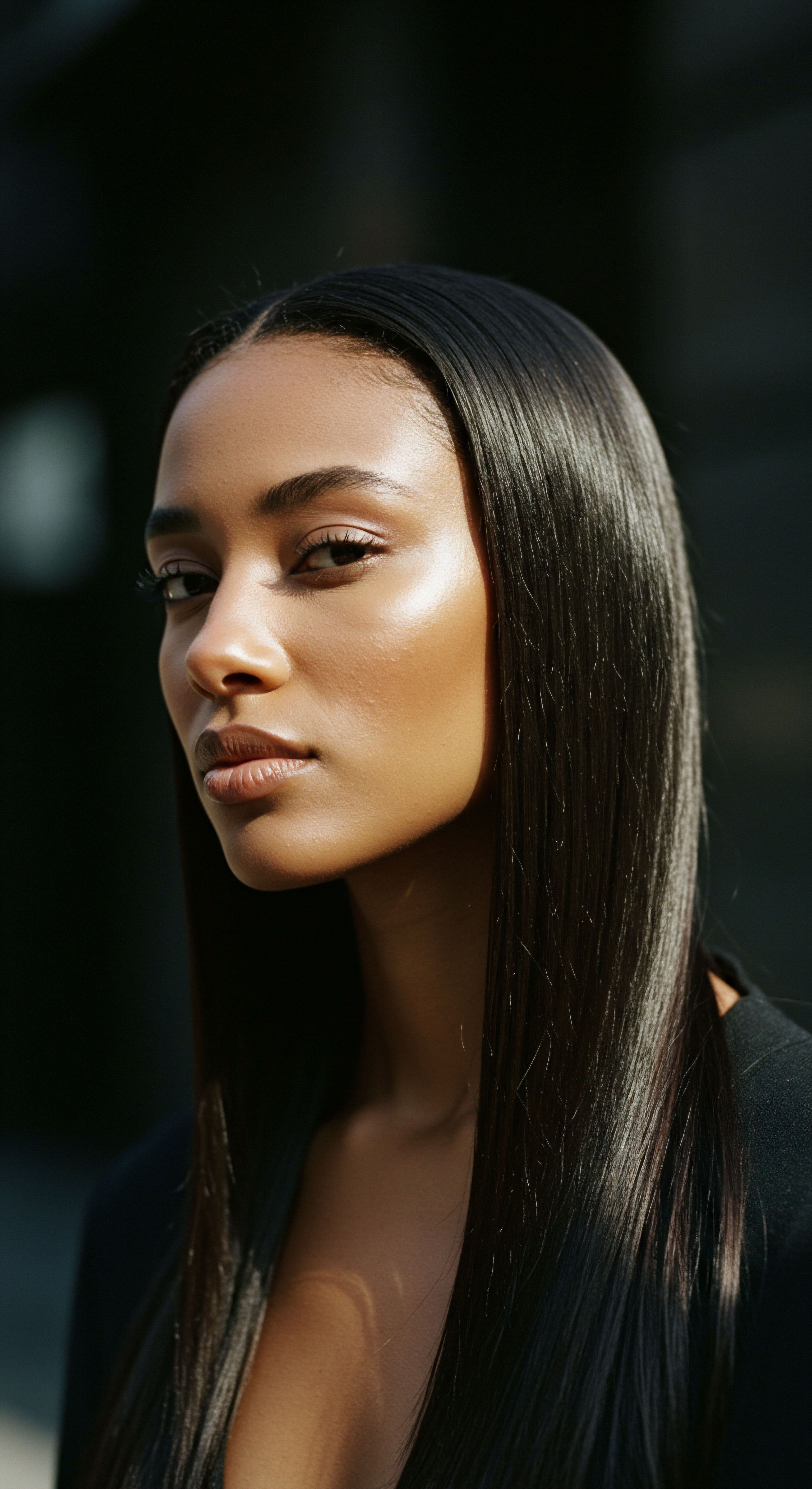
Formulation Considerations for Textured Hair
For textured hair, the choice between fibroin and sericin, or their combined use, holds particular weight. Coily and kinky textures often possess a more open cuticle structure, making them more susceptible to moisture loss and environmental damage. This same openness can also mean they absorb ingredients more readily.
Products featuring Hydrolyzed Fibroin can be immensely beneficial for these textures, offering a much-needed structural support that helps prevent breakage at points of manipulation, such as during detangling or styling. The added strength can make the hair more resilient to the stresses of daily styling. However, care must be taken not to overuse protein, as an imbalance can lead to stiffness or brittleness in some hair types.
Sericin-Based formulations are often celebrated for their detangling and slip-enhancing properties, which are invaluable for textured hair prone to tangles and knots. The smoothing film it forms can significantly reduce friction, making the detangling process gentler and minimizing mechanical damage. Its humectant nature also aids in maintaining the delicate moisture balance that textured hair consistently strives for. For those with drier, more porous textures, sericin can be a consistent ally in maintaining suppleness and reducing frizz by sealing the cuticle.
Ultimately, the most effective ritual acknowledges the distinct contributions of each protein, allowing for a personalized approach that honors the unique needs of every coil and wave. It is a dance of science and intuitive care, a testament to the wisdom we gather about our own hair.

Relay
To truly appreciate the profound impact of silk proteins on textured hair, we must move beyond simple molecular distinctions and consider the broader context of their interaction with the hair’s intricate architecture, alongside their historical and cultural significance. The narrative of silk is not confined to laboratories; it is interwoven with human ingenuity, tradition, and the pursuit of beauty across civilizations. This section extends our exploration into the sophisticated interplay of fibroin and sericin within hair science, acknowledging the legacy they carry and the nuanced benefits they confer upon hair that often demands a deeper, more specialized understanding.

How does the Processing of Silk Influence the Properties of Fibroin and Sericin for Hair Application?
The raw silk filament, as spun by the silkworm, is a composite of fibroin core and sericin gum. For cosmetic applications, these components are typically separated and further processed, as raw sericin’s stickiness and potential for allergic reactions (due to impurities) make it less suitable for direct use. This separation process, known as Degumming, traditionally involves boiling the cocoons in hot water, often with alkaline solutions or soaps, to dissolve the sericin. The resulting fibroin is then further purified and hydrolyzed into smaller peptides or amino acids to enhance its solubility and ability to interact with hair.
The degree of hydrolysis for both fibroin and sericin is a critical factor. For Hydrolyzed Silk Fibroin, the smaller the peptide fragments, the greater their potential to penetrate the hair cuticle, offering more than just surface conditioning. Studies on the penetration of proteins into hair have shown that peptides with molecular weights below 1,000 Daltons have a higher probability of entering the cortex, potentially offering internal repair and strength.
Conversely, larger protein fragments primarily deposit on the hair surface, forming a film. The challenge for formulators lies in creating fibroin hydrolysates that are small enough for potential penetration but still retain enough of the protein’s inherent structural integrity to confer meaningful benefits.
For Hydrolyzed Silk Sericin, the processing aims to retain its beneficial humectant and film-forming properties while eliminating the undesirable stickiness and potential irritants. Sericin can be hydrolyzed into various molecular weights, and its conditioning efficacy is often linked to its ability to form a flexible, non-occlusive film on the hair surface. The quality of this film influences detangling, smoothness, and shine.
Advanced processing techniques, such as enzymatic hydrolysis, allow for precise control over the molecular weight distribution of both fibroin and sericin peptides, tailoring them for specific hair care objectives. This careful manipulation post-harvest is what truly unlocks their individual powers for hair.

Are There Cultural Considerations in the Use of Silk for Hair Care?
The relationship between silk and hair care extends far beyond modern cosmetic science. Across various cultures, particularly those with long histories of silk production, silk has been revered for its perceived benefits to hair and skin. In East Asian traditions, for instance, the use of silk remnants or even water used to rinse raw silk for bathing and hair conditioning has historical precedent. These practices, passed down through generations, often preceded scientific understanding of protein chemistry but intuitively recognized silk’s smoothing and softening attributes.
For textured hair, the modern re-discovery and emphasis on silk products, particularly silk pillowcases and bonnets, is deeply rooted in practical wisdom. The smooth surface of silk significantly reduces friction compared to cotton, which can snag delicate strands, absorb moisture, and disrupt curl patterns. This reduction in mechanical stress is crucial for preserving the integrity of coils and kinks, minimizing breakage, and maintaining moisture levels overnight.
While the direct application of fibroin or sericin through products offers molecular benefits, the cultural practice of protecting hair with silk accessories offers a macroscopic, yet equally vital, layer of care. It is a tangible link between ancient wisdom and contemporary hair health strategies, demonstrating a holistic appreciation for the material.
Silk’s legacy in hair care extends from ancient cultural practices to modern scientific formulations.
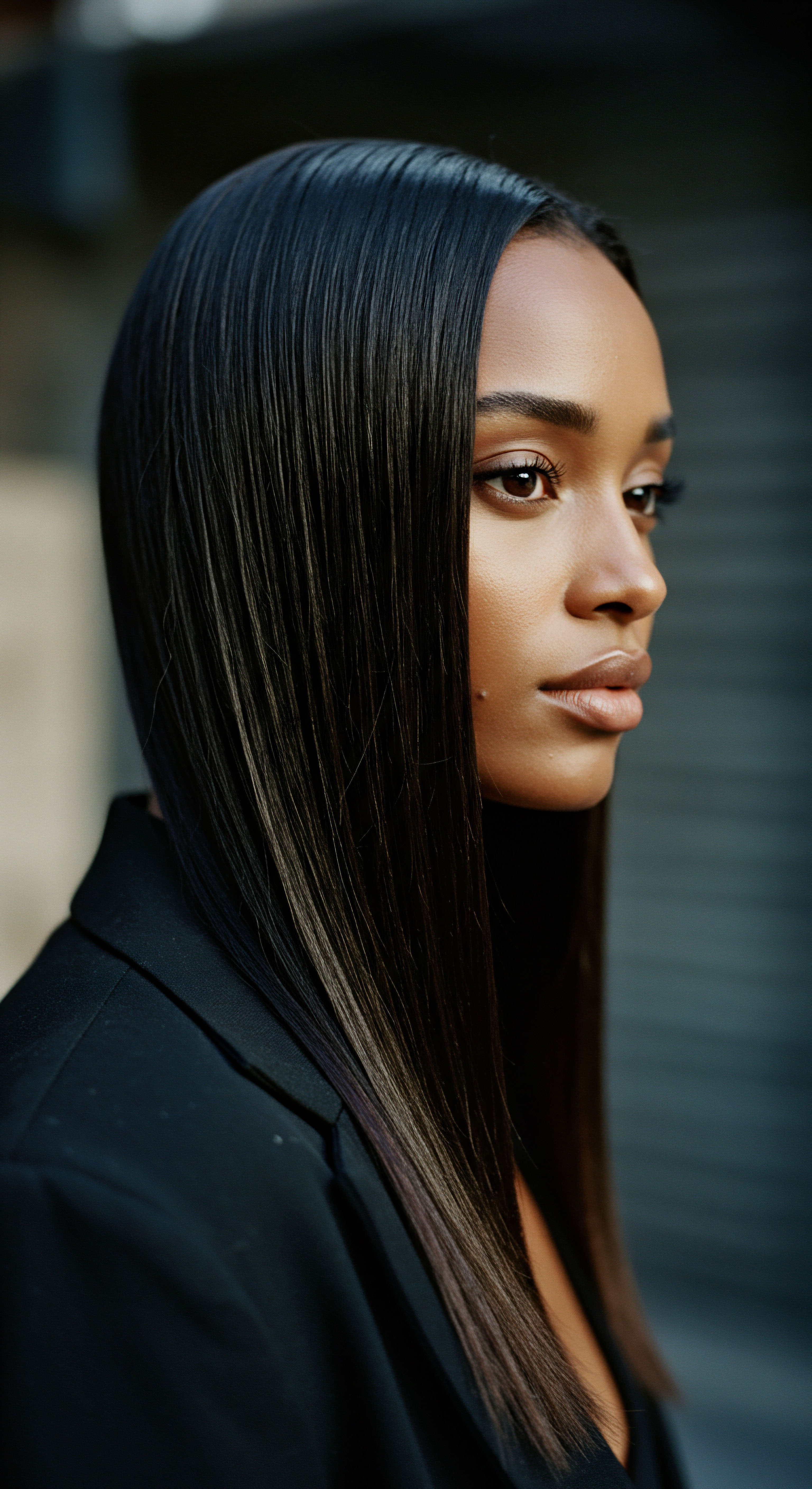
The Synergistic Effect of Both Proteins
While we dissect the distinct roles of fibroin and sericin, it is important to recognize that their combined application can yield a synergistic effect, offering a more complete solution for hair wellness. A product that skillfully combines both hydrolyzed fibroin and hydrolyzed sericin might aim to simultaneously strengthen the hair’s internal structure while providing superior external conditioning and moisture retention.
Consider a deep conditioning treatment for highly porous, textured hair. The Fibroin components could work to temporarily patch cuticle damage and reinforce the keratin structure, making the hair less prone to future breakage. Concurrently, the Sericin would form a flexible, breathable film on the surface, sealing in moisture, reducing frizz, and providing exceptional slip for detangling.
This dual action addresses both the core resilience and the surface smoothness, leading to hair that is not only stronger but also softer, more manageable, and visibly healthier. This integrated approach reflects a deeper understanding of hair’s multifaceted needs, moving beyond singular solutions to a comprehensive care philosophy.
The nuanced differences between silk fibroin and sericin offer a compelling example of how a singular natural source can yield diverse benefits. For those with textured hair, recognizing these distinctions allows for a more discerning and effective approach to product selection, moving from broad categories to targeted, intelligent care. It is a quiet revolution in understanding, allowing us to treat our hair with the reverence it deserves.

Reflection
As we close this exploration into the dual heart of silk, we find ourselves with a richer appreciation for the unseen wonders that shape our hair’s story. The silkworm’s unassuming gift, cleaved into its strong core and gentle embrace, mirrors the very balance we seek in our own hair journeys ❉ resilience intertwined with tenderness. This deeper understanding of fibroin and sericin does not merely add to our knowledge; it invites a more intentional, even poetic, relationship with our strands, allowing us to choose with wisdom and care.

References
- R. B. N. Ramachandran, K. R. R. S. N. Ramachandran, & C. K. Ramachandran, “Studies on the effect of silk fibroin hydrolysates on hair strength and elasticity,” Journal of Cosmetic Science, vol. 59, no. 3, pp. 217-226, 2008.
- Minoura, N. Arai, Y. and Tsukada, M. “Silk Sericin as a Humectant and a Film-Forming Agent.” Journal of Applied Polymer Science, vol. 56, no. 7, pp. 891-896, 1995.
- Gopinath, V. et al. “Biomedical applications of silk fibroin.” Materials Today Communications, vol. 26, 102142, 2021.
- Padamwar, M. N. & Daithankar, A. V. “Silk sericin and its applications ❉ A review.” Journal of Scientific & Industrial Research, vol. 66, pp. 977-983, 2007.
- Kundaje, R. et al. “Molecular and Structural Basis of Silk Fibroin Self-Assembly.” Current Opinion in Structural Biology, vol. 22, no. 5, pp. 586-592, 2012.
- Dash, R. et al. “Biomaterials and their applications.” RSC Advances, vol. 9, no. 19, pp. 10677-10690, 2019.
- Aramwit, P. et al. “The effect of silk sericin on hair strength and damage.” Journal of Cosmetic Science, vol. 60, no. 1, pp. 95-103, 2009.
- Gulrajani, M. L. & Gupta, D. “Developments in Silk Dyeing.” Textile Progress, vol. 35, no. 3, pp. 1-70, 2005.
- Vepari, C. & Kaplan, D. L. “Silk as a Biomaterial.” Progress in Polymer Science, vol. 32, no. 8-9, pp. 991-1007, 2007.
- Freddi, G. et al. “Silk fibroin and sericin ❉ Two proteins from a single natural source for biomedical applications.” Journal of Materials Science ❉ Materials in Medicine, vol. 18, pp. 1295-1300, 2007.